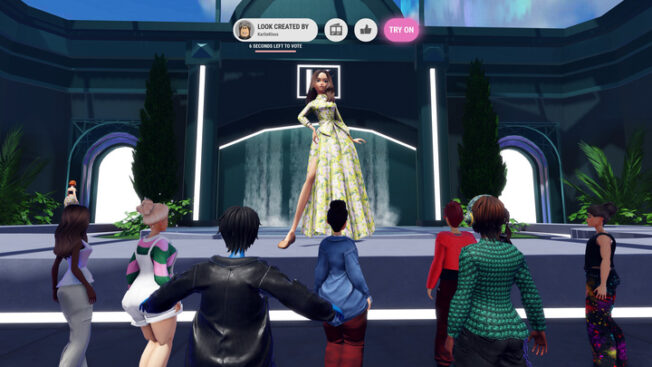Mark your calendar for Mediaweek, October 29-30 in New York City. We’ll unpack the biggest shifts shaping the future of media—from tv to retail media to tech—and how marketers can prep to stay ahead. Register with early-bird rates before sale ends!
Editor’s Note: The following is the college application essay of 18-year-old fashion designer and creator Rush Bogin, best known for his now multimillion-dollar business and success with UGC and fashion designs on Roblox. He leveraged this early success to get accepted to Yale, Harvard and Stanford and has formally accepted his offer to go to Stanford in the fall.
This essay has been lightly edited for clarity. Though the essay is from the 2022 college application timing, it contains lessons about creating for the metaverse from the Gen Z perspective as the advertising and marketing community grapples with seeing success in the space.
My friends joke that I’m a nerd who plays video games most of them haven’t touched since their single-digit years. They’re right, sort of. I’m a virtual fashion designer for the online platform Roblox, which means I spend my time pouring over TikToks, fashion mags and Instagram; whatever it takes to figure out what teens like when it comes to accessorizing their virtual avatars.
I first started playing Roblox when I was seven, loving that, as my avatar, I could pretend to be anyone. In real life, I wore Target tees and ripped jeans. But on Roblox, I rocked a top hat, a three-piece suit and a pirate leg. That’s when my fascination with virtual fashion began.
Over six years, I taught myself to 3D model, created a successful game and was eventually contracted by Roblox to make fashion accessories for their virtual catalog. Having grown up playing Roblox, I thought I knew exactly what the community wanted. But my first few creations flopped … big time! I wanted to quit.
Then one day I met a Brazilian creator named Caio in a Roblox server. We hit it off, and when I asked him why my accessories were failing, he bluntly told me my creations were bad. He said I could 3D model, but I lacked finesse. That summer, Caio taught me how to make more detailed 3D models and textures.
To be successful I also had to understand what items teenagers actually wanted to wear. I immersed myself in social media and came across a popular meme: a twenty-something in a cozy coat, sipping a latte and wearing a beanie. It was my first attempt to bring a real-world trend to Roblox. I released the “Cute White Winter Beanie” at midnight. By the time I woke up in the morning, it was the number one item in the catalog. Eventually, it seemed almost every creator on the platform was making some sort of beanie.
I started to fear I would never make another successful item. My entire reputation revolved around one beanie. I again scoured social media for trends that would appeal to Roblox users. I found lots of “goth” fashion items and a viral TikTok of a teenager in a plush bunny hood. I created a classic white bunny hood and a black goth version with chains, safety pins and rings. Within days, both hoods rocketed to the top of the catalog.
I was recently hired by supermodel and entrepreneur Karlie Kloss to be her chief Roblox consultant for her upcoming fashion experience. Karlie knows real-world fashion like the back of her hand-made Jimmy Choos, but she relies on me to explain how to monetize trends on Roblox.
For example, her team was just about to release a virtual Carolina Herrera designer dress. The team wanted to put it on sale for 24 hours and advertise in advance that it was going to be a “limited” item. I explained that the dress would fail if they followed this plan. Instead, I told them not to advertise it at all, and to take it off the market once it hit a few hundred items in sales.
The dress was released on a Monday morning and sold for 500 Robux (about $5). We took it off sale four hours later. By that night, the dress was reselling for 200K Robux. The team was blown away. Vogue Business even did a story about it eventually reselling for the equivalent of $5,000.
Because of my success on the platform and work with Kloss, I’ve been approached by the NFL, NASCAR, Sony Music, the MLB and even Sir Elton John to both consult and design items to bring their brands successfully to Roblox. Would I one day like to learn how to make virtual fashion that appeals to all ages? Of course! Maybe that’s what college is for?










